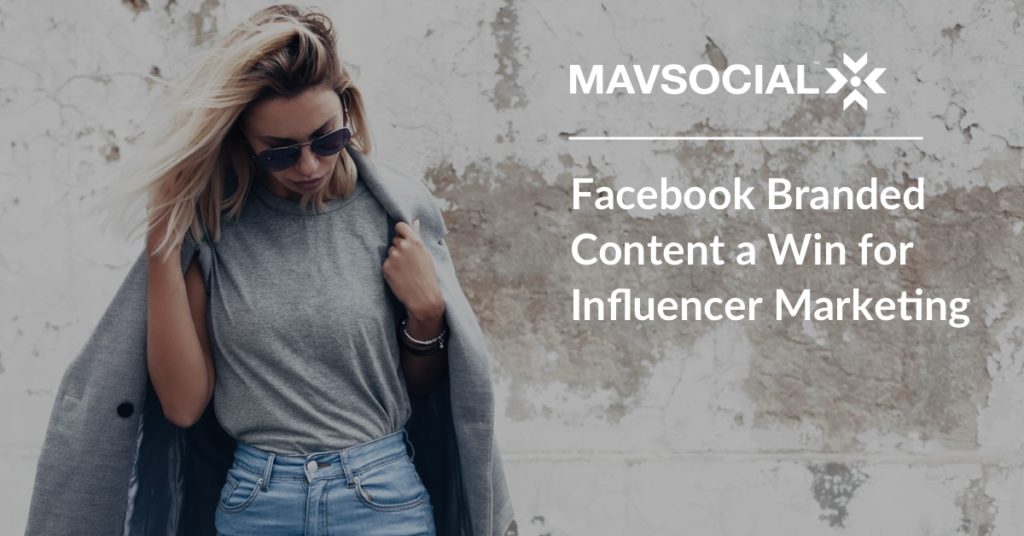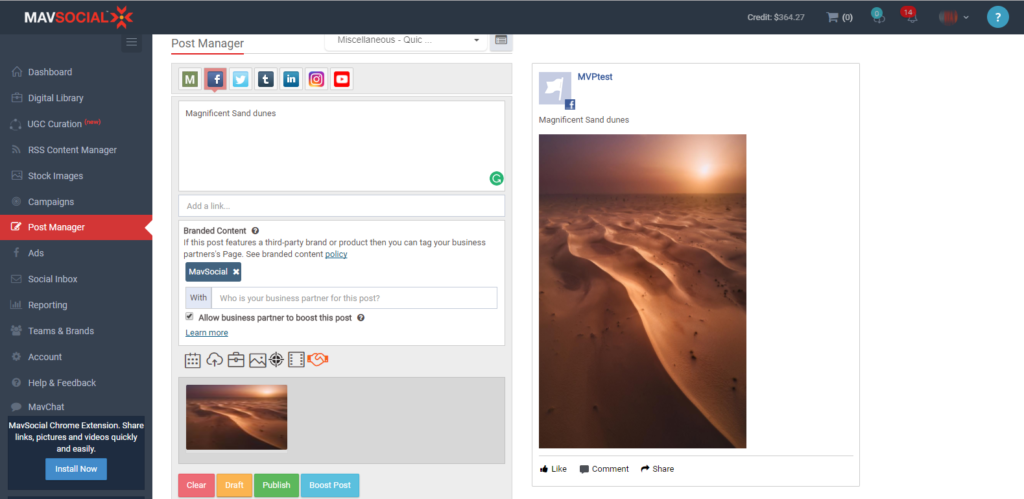Facebook’s pay-to-play approach to influencer marketing just got a whole lot more interesting with the introduction of its branded content feature.
Some marketing commentators have been quick to label the changes as a hit to influencer marketing, but it may also create some real opportunities for clever brands and content creators.
So what exactly is Facebook’s Branded Content feature and what does it mean to influencers and marketers?
Influencer marketing
According to research from Bloglovin influencer marketing has experienced explosive growth in recent years with 32% of marketers (who use influencers) viewing them as essential to strategy.
More than 41% of marketers reported greater success with influencer campaigns than with traditional advertising efforts.
In practice, influencer marketing works a little something like this.
A brand wants their products or services featured prominently on social media.
To increase their reach on Facebook, a brand has the option of creating their own content then boosting it or paying for an ad, which is clearly labeled as an ad or sponsored post.
Another option is to get a third party or ‘influencer’ to promote your brand for you.
Influencer marketing is where the brand finds a social media user who aligns with the brand and has high organic engagement.
The influencer then features the brand in their posts, usually in exchange for goods, services or other payment.
The success of this strategy has been reliant on a couple of things.
First of all, the influencer usually has a large following and significant post engagement, so organic reach is naturally high. However, we have seen a rise in the use of micro-influencers recently for hyper-targeted campaigns.
And secondly, content often appears more like ‘editorial’ rather than ‘advertorial’ – that is, any commercial relationship between the influencer and brand may not be entirely obvious. However, things are about to change.
Influencer Marketing Pitfalls
While plenty of brands and influencers have been cashing in on this trend, the practice of influencer marketing hasn’t been without its problems.
There have been reported issues of groups of influencers collaborating to artificially boost each other’s posts, and widespread use of purchasing fake followers.
Additionally there has been little rigor applied to how an influencer has to acknowledge their commercial partnerships in the past. It was not until recently that the Federal Trade Commission issued its first law enforcement action and 21 warning letters to individual online influencers. They’ve also updated their Endorsement Guides to better define disclosure.
Brands have also been heavily reliant on the influencer to provide data on the performance of their posts without much transparency into actual data or analytics.
Brands struggling with organic reach have been pushed towards paying to boost their own posts or create ads to be seen by larger audiences.
Some brands have willingly paid to boost influencer posts but their options have been limited to re-creating the post, or sharing the original post, which often looks clunky and visually unappealing.
Facebook’s Branded Content feature claims to address several of these issues and level the playing field.
Branded Content
For some time Facebook has given verified Facebook page owners — typically brands, publishers or influencers –– the ability to run branded content. More recently this feature has been made available to other page owners.
At the same time Facebook updated its Branded Content Policy, to make it a requirement for creators and publishers to tag business partners in posts featuring a third party product, brand or sponsor.
Facebook will hide published posts that violate the policy, from news feeds until the violation is resolved.
These changes effectively making influencers and brands act more transparently in their partnerships, with the branded content posts displaying a “with” tag in the News Feed. They will also be labelled ‘paid’ or ‘sponsored’.
As a result, social media users (and Facebook) can now easily identify commercial partnerships.
It’s no secret that Facebook has taken a pay-to-play approach for brands for some time, so these changes provide more opportunity to encourage influencers and brands to boost content.
That being said, the changes also make it easier for brands wishing to boost influencer content, to do so.
What’s in it for brands?
Marketing Dive explains that marketers can now directly boost posts from the creator’s Page. The influencer just needs to tag their partner with the branded content tool and enable permission for the post to be boosted.
“This means the targeted audience will see the post as originating from the influencer rather than the brand. Before the change, marketers could only boost sponsored posts by sharing the (original) post first.”
With this new feature, brands will also have full access to campaign data on tagged posts and be able to better track results from each branded post.
Additionally, brands can now choose which creators can tag them, giving them more control over who they are affiliated with.
A win for influencers too
The changes also make reporting easier for influencers, since tagging enables the brand to see high-level performance insights such as reach, spend, CPM and engagement.
More importantly the branded content tag feature makes it much simpler for brands and influencers to leverage the visibility of each other’s Facebook audiences.
Branded content made easy with MavSocial
The great news is that brands and influencers can access all the benefits of branded content right from MavSocial’s dashboard.
Our most recent upgrades to the app makes branded content and Facebook advertising even easier.
In a seamless experience, paid users can easily tag branded content in MavSocial, and manage any branded content campaigns or posts.
Once you have your partnerships set up on Facebook, you can simply click on the handshake icon in MavSocial’s compose window, type in the name or Facebook url of the brand you wish to tag and voilà, there’s your collaboration!

